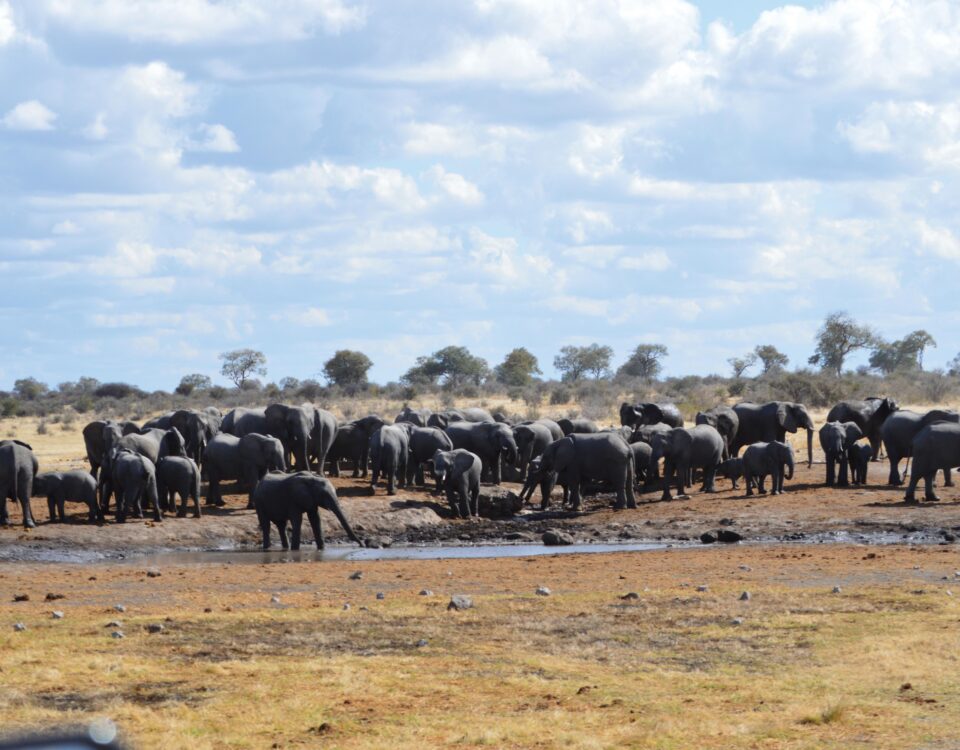Riverboat Birding
January 8, 2020
A 12-year-old’s guide to camping by the River
January 9, 2020[vc_row][vc_column][vc_column_text]
Willie Olivier is a veteran journalist and travel writer. He has been compiling guides and travel directories for visitors to Namibia since before independence. In this series for Travel News Namibia, Willie compiles notes, thoughts and take-aways from his travels. Interesting facts, little-known happenings and anecdotes of the adventures of this vagabond.
[/vc_column_text][/vc_column][/vc_row][vc_row][vc_column][vc_column_text]
WHAT’S IN A NAME?
Scientific names of plants, animals and birds are more often than not Greek – or let me rather say Latin – to most people. But they provide fascinating information on numerous aspects such as their common names, characteristic features and in some cases also who collected them. Take for example the Sandwich Tern (Sterna sandvicensis). It is neither named after a sandwich, nor Sandwich Harbour, but after the type locality, Sandwich, a village on the east coast of England. Many birds owe their common names to the naturalists who first collected the specimens or in honour of that naturalist’s scientific contributions. The list of birds is quite extensive: Verreaux’s Eagle, Bradfield’s Swift, Rüppell’s Korhaan, Monteiro’s Hornbill – to mention but a few. Some species like the Damara Red-billed Hornbill (Tockus damarensis) and the Mosque Swallow (Cecropis senegalensis) – indicate the type locality. Specific names of birds also refer to distinctive characteristics. The specific name of the Black-bellied Bustard (melanogaster) is derived from the Greek words melanos (black) and gaster (belly). The Marabou Stork’s specific name (crumeniferus) is a combination of two Latin words: crumena (a pouch) and fero (to bear) – a reference to its inflatable throat pouch. The name of numerous plants honours their collector. One such plant, Meyer’s Aloe (Aloe meyeri) has a restricted distribution in southern Namibia and the adjoining Richtersveld in South Africa. It was named in honour of the Reverend G. Meyer of the Steinkopf mission station in Namaqualand who first collected specimens of this species. Other plants and trees are named after distinctive characteristics. For example, the Buffalo-thorn (Ziziphus mucronata) owes its specific name (mucronata) to its pointed thorns. The specific name of the Laventelbos (Croton gratissimus) refers to the pleasant smell of its crushed leaves. The list is simply endless.
[/vc_column_text][vc_column_text]
IS IT THE GROUND SQUIRREL OR NOT?
The Cape Ground Squirrel (Xerus inauris) is a common small mammal occurring in southern Africa’s arid areas. It never fails to attract attention when it sits upright with its tail serving as an umbrella or when it dashes off at great speed to one of the many burrows in its warren when disturbed. It was only recently that I became aware that there are, in fact, two species of ground squirrels in Namibia. The Mountain Ground Squirrel (Xerus princeps) is confined to the mountains and hills of the western escarpment from the Fish River Canyon to south-western Angola and is classified as a near-endemic Namibian species. The more common Cape Ground Squirrel (Xerus inauris) occurs east of the escarpment in open terrain with sparse bush cover and plains. The two species are very similar in appearance and are difficult to distinguish in the field. The Mountain Ground Squirrel has three black bands instead of two on the long tail hairs. Its incisor teeth are yellow to orange instead of white.
[/vc_column_text][vc_column_text]
TAKE A STEP WAY BACK IN TIME
Have you ever been tempted to visit the National Earth Science Museum in the Ministry of Mines and Energy building in Aviation Road? It is a treasure trove of mineral and fossil specimens, as well as displays on mining. The fossil collections are especially interesting and include the oldest fossil ape found south of the equator, Otavipithecus namibiensis, the earliest flowering plants in Namibia and a life-size replica of a Massospondylus dinosaur which roamed the earth 200 million years ago – to mention but a few. The museum is located opposite the Safari Court Hotel. It is open Mondays to Fridays from 08h00 to 13h00 and from 14h00 to 17h00. Entry is free.
[/vc_column_text][vc_column_text]
CLOSE ENCOUNTERS WITH A ‘SPOTTIE’
Spotted hyenas are known to mutilate and maim people sleeping out in the open. Many, many moons ago when we were all much younger, I was camping with some fellow travellers in the Hoanib River. As is customary, I looked around the campsite for tracks of anything that might visit unannounced at night, but saw nothing. As this was a ‘boys trip’ it was rather noisy and I decided to sleep a little distance away, using the vehicle as a windshield. Sometime in the early morning hours I woke up and my arm was wet and slimy. Panic gripped me as I tried to work out whether it was a nightmare or what it could possibly be. Moving as little as possible, I reached out for my torch and when I switched it on, there was my unwelcome visitor – a spotted hyena looking curiously at me. I sent the intruder skulking off into the darkness with a string of profanities and was extremely relieved when I realised that it didn’t have an arm or other body part in its mouth and my face was still intact. The rest of the night was spent in a very uncomfortable position on the vehicle’s roof rack. A lucky escape, I thought. Maybe I still smelt too fresh, or it was because what appeared to be a single young hyena. But the incident made me re-evaluate the sanity of sleeping out in the open where there are potentially dangerous animals!
[/vc_column_text][vc_column_text]This article was first published in the Summer 2019/20 issue of Travel News Namibia.[/vc_column_text][/vc_column][/vc_row]

